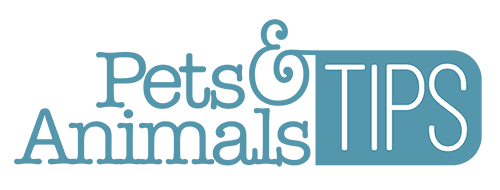Both green tree pythons and emerald tree boas are common snakes that snake lovers keep as pets. These snakes look almost similar to the untrained eye, but that is not the case. The emerald tree boa and green tree python have subtle differences that are easy to spot if you know what to look for.
So, what are the differences between emerald tree boas and green tree pythons? Read to learn more below.
Emerald tree boa vs Green tree python
Emerald tree boas and green tree pythons have similar appearances but differ in so many ways. Here are some of their top differences:
Origins
If you find the emerald tree boas and green tree pythons in their natural habitats, you will not have trouble distinguishing between them. These two snakes come from different regions of the world. The boas originate from the tropical rainforests of South America; you can find them in Venezuela, Peru, Columbia, and Brazil.
On the other hand, the green tree pythons originate from rainforests in Indonesia, Australia, and New Guinea. Therefore, the two different origins are oceans apart. One thing to note is that both snakes' natural habitat is the rainforests, making them have similar care processes in captivity.
Appearance
Despite the emerald tree boas and green tree pythons' almost similar appearances, they have differences in their body shape, scales, and head. The python typically has a rounder nose and uneven, tiny scales on their body and head. On the other hand, the boas have squarish noses and large-even scales on their body.
How they give birth
Both boas and pythons lay eggs. However, the boas appear to give birth to live younglings, but the mothers usually carry these eggs until they hatch internally. On the other hand, the pythons lay a batch of eggs.
Handling
The green tree python is easier to manage between the two snakes as it has a milder temperament. On the other hand, the boa is more aggressive and temperamental. This aggressiveness makes it a little challenging to handle.
Color of the young
The biggest coloring difference between the pythons and the boas is when they are younglings. The green tree pythons are dark brown, red, or yellow when juveniles. However, their color becomes bright green when they become adults.
The juveniles of the emerald tree boas are either dark red or light orange and never yellow. Also, they turn green when they become one year old.
Are emerald tree boas venomous?
If you are familiar with the emerald tree boas, you can describe them as more aggressive and temperamental than the pythons. However, these aggressive snakes have a non-venomous bite though they have large front teeth. These large front teeth make their bite to be very painful.
Are green tree pythons venomous?
Like the boas, the green tree pythons are not venomous. Also, their bit is less painful than emerald tree boas. When the green tree pythons bite you, you will feel like a needle pricked you. The aftereffects of the bite are often puncture wounds, scratches, or bruising.
How big do emerald tree boas get?
The boa's size varies with its location. In the wild, they can grow up to 10 feet in length. However, in captivity, the boa grows up to six feet in length and weighs between two and four pounds. One thing to note is that the snake's feeding frequency, husbandry, diet, and health also play crucial in the Emerald Tree Boa size. Therefore, look beyond the size to know the difference between emerald tree boas and green tree pythons.
How big do green tree pythons get?
The average green tree python size is 5 feet in length. Green tree pythons are also leaner than boas and have an average weight of about 3.5 lbs. Like the boas, the python's size depends on its diet, health, and husbandry.
What is the best size for an emerald tree boa enclosure?
A baby emerald tree boa snake can begin staying in a cube that is 1*1*1 feet. On the other hand, the best emerald tree boa enclosure for an adult is a 3*2*2 feet enclosure. When it comes to adult boas, the width is more vital than the height, as the snakes love moving from one branch to another.
The best enclosures for boas are either commercially available glass aquariums, like the ReptiZoo Glass Reptile Terrarium, or plastic reptile enclosures. Also, make sure that you secure these enclosures using lids and clips to prevent your snakes from escaping.
When providing the boa with an enclosure, make sure to provide temperatures that mimic their natural habitat in the rainforest. The rainforest often has humid and warm temperatures, so ensure the enclosure's temperature is warm.
The best daytime temperature for emerald tree boas ranges between 86- and 88 degrees Fahrenheit. This temperature is necessary for basking. Therefore, add a heat source to the cage. The best heat sources you can consider include; Zoo Med Nocturnal infrared heat lamp or the Exo Terra Ceramic Heat Heater.
What is the best size for a green tree python enclosure?
Both the green tree pythons and boas are comfortable living in environments with similar parameters. Thus, ensure that the pythons' temperature, humidity, and branches are similar to the boas.
Like the baby boas, the best green tree python enclosure size for a baby python should be 1*1*1 feet. The enclosure of the adult python is also similar to that of adult boas, 3*2*2 feet. In addition, both snakes survive best in a terrarium with a humidity of 60 to 80 degrees, as it mimics the humid environment in the rainforest. This humid environment will encourage your snakes to shed well.
Bottom Line
The green tree pythons and emerald tree boas appear similar. However, they differ in size, origin, handling requirements, how they give birth, their young's coloring, body shape, scales, and head appearance. If you intend to keep any of these snakes, note that they survive in the same tank parameters as both come from the rainforests.

Antonio Janeski on Pexels






